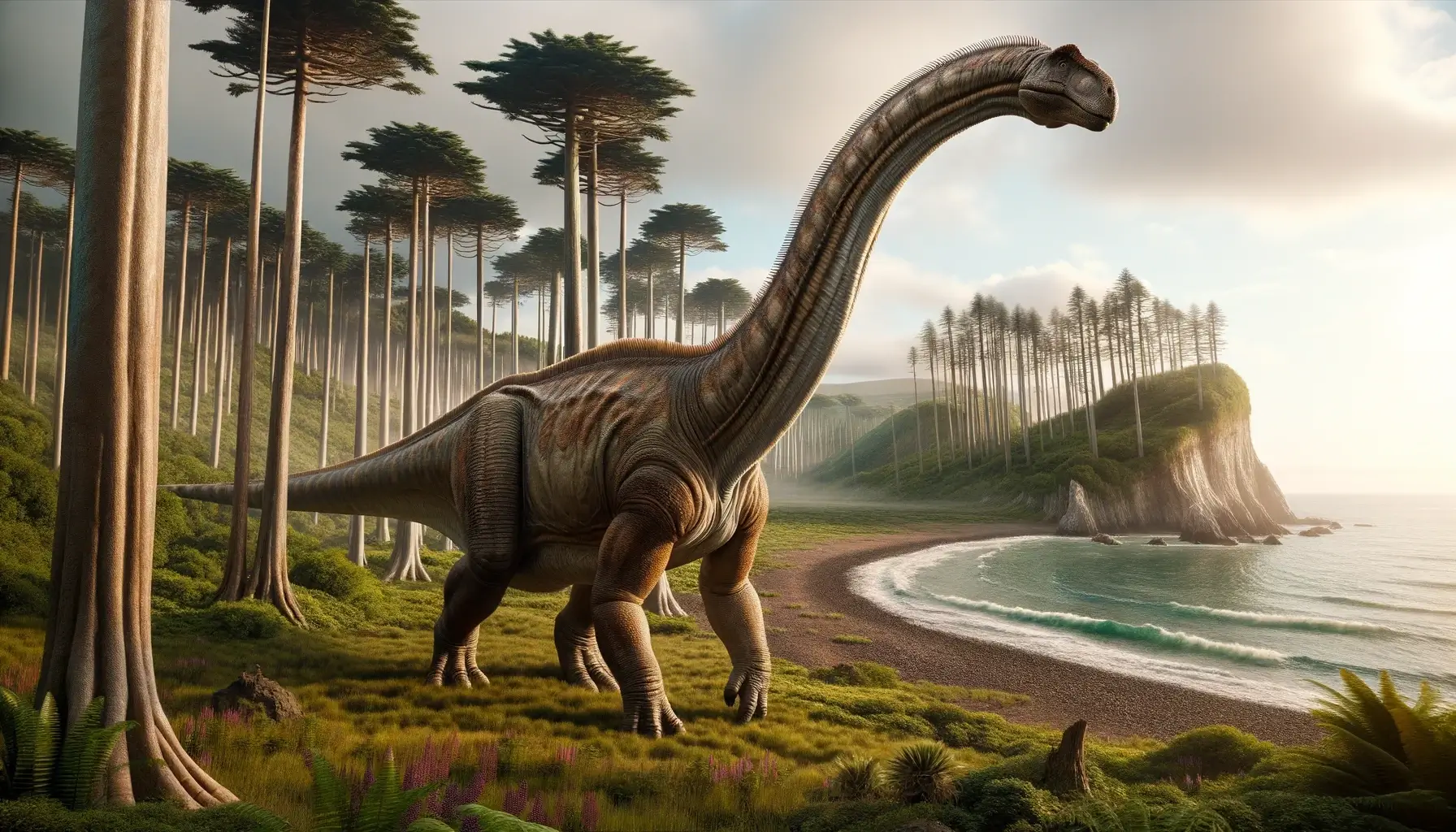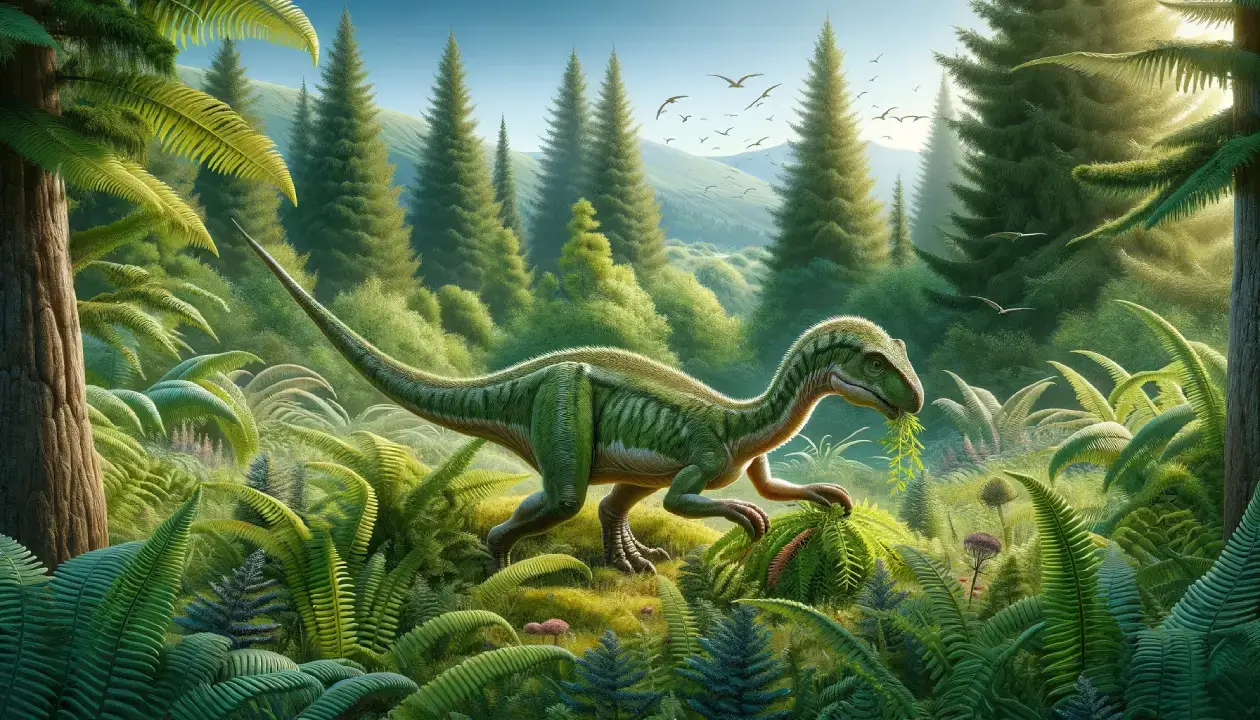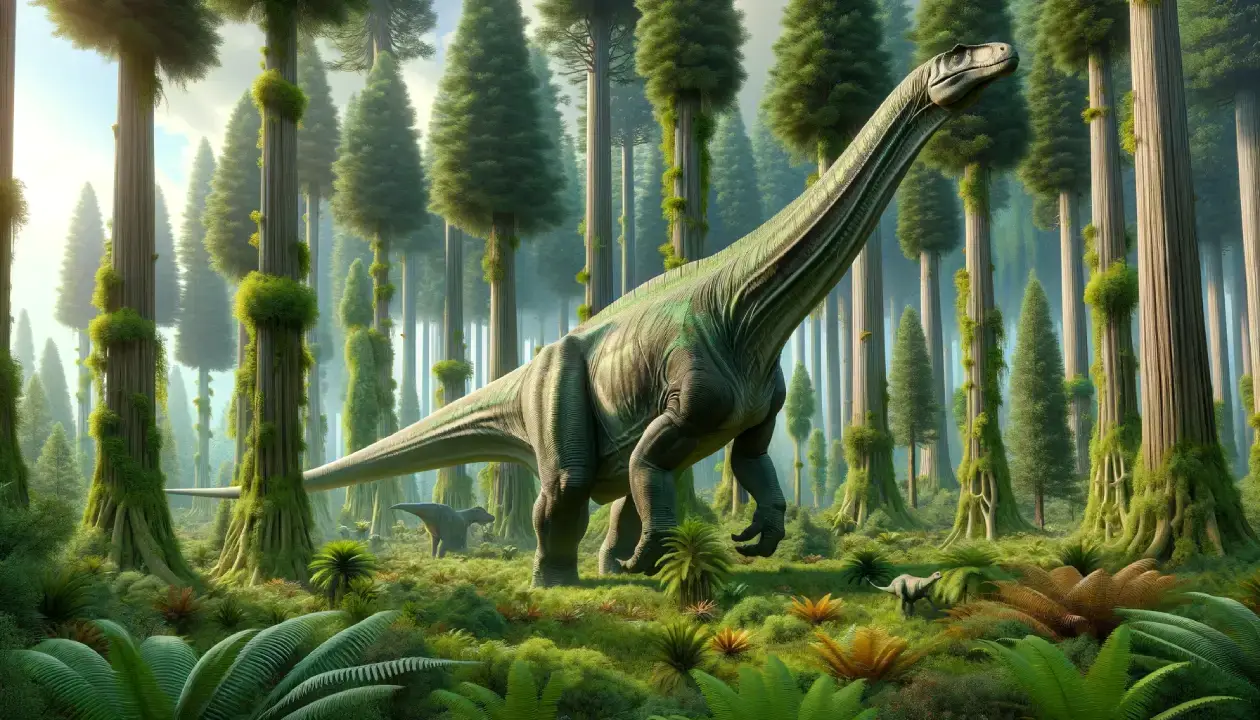Alamosaurus was a gigantic sauropod dinosaur that lived in what is now southwestern North America during the Late Cretaceous period, about 70 to 66 million years ago. It was one of the last surviving non-avian dinosaurs and the only known sauropod in North America at that time. It had a long neck, a long tail, and a small head, like most sauropods. Its body was partly covered in bony armor that may have protected it from predators.
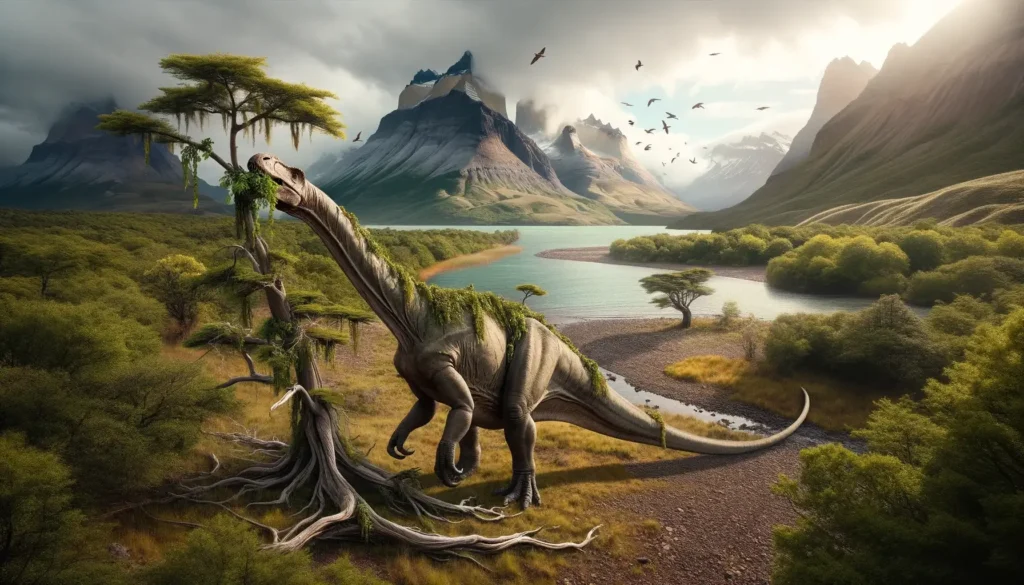
Basic Information
| Feature | Details |
| Time Period | Late Cretaceous (80-66 million years ago) |
| Diet | Herbivore |
| Length | About 30 meters (98 feet) or more |
| Weight | About 72.5-80 metric tons (80-88 short tons) or more |
| Size | Gigantic |
| Posture | Quadrupedal |
| Locations | Canada (Alberta), USA (New Mexico, Texas, Utah) |
| Continent | North America |
| Type | Sauropod |
| Habitats | Ridge |
Description of Alamosaurus
Historical Context
Alamosaurus was first discovered in 1922 by Charles W. Gilmore, who named and described it in the same year. The fossils of Alamosaurus were found in the Ojo Alamo Formation, a rock layer in the San Juan Basin of New Mexico, which gives the dinosaur its name. Alamosaurus is known from several partial skeletons and isolated bones, mostly from juvenile or small adult specimens. However, some fragmentary specimens suggest that adult Alamosaurus could have grown to enormous sizes comparable to the largest known dinosaurs, like Argentinosaurus and Puertasaurus. Alamosaurus is one of the last surviving non-avian dinosaurs, as its fossils have been recovered from only a few meters below the Cretaceous-Paleogene boundary in Texas.

Physical Attributes
Alamosaurus was a gigantic quadrupedal herbivore with a long neck, long tail, and relatively long limbs. Its body was at least partly covered in bony armor-like structures called osteoderms. Its skull was small compared to its body, with a short snout and spoon-shaped teeth adapted for cropping low-growing vegetation. On its neck and back, it had tall neural spines that supported a hump or a sail. These structures could have been used for thermoregulation, display, or communication. Its tail was long and whip-like, and it may have used it for defense against predators.
Feeding Habits
As a herbivore, Alamosaurus fed on plants, mainly ferns, cycads, conifers, and ginkgoes that grew in the ridge habitat of North America during the Late Cretaceous. Unlike some other sauropods that could reach high branches with their long necks, Alamosaurus probably browsed on plants that were closer to the ground. It may have used its strong neck muscles to pull down branches or strip leaves from stems. It is possible that Alamosaurus swallowed stones (gastroliths) to help grind up the plant material in its stomach.
Unique Features
The most distinctive feature of Alamosaurus was its large size and late appearance in the fossil record. Alamosaurus was one of the largest dinosaurs ever to walk on Earth, rivaling or exceeding the size of other giant sauropods like Argentinosaurus and Puertasaurus. Alamosaurus was also one of the few sauropods known to have lived in North America during the Late Cretaceous, after a nearly 30-million year absence of sauropods from the continent. Alamosaurus probably represents an immigrant from South America that crossed a land bridge during a period of low sea level.
Movement and Speed
Alamosaurus was a quadrupedal dinosaur, meaning it walked on all four legs. It had short but powerful limbs that supported its heavy body. Its front legs were slightly shorter than its hind legs, giving it a sloping posture. Its feet had five toes each, with claws on the first three toes. Alamosaurus was not a fast runner, but it could probably move at a moderate pace when needed. Its leg bones were more sturdy than those of today’s white rhinoceros, which can gallop at speeds of up to 50 kilometers per hour (31 miles per hour).
Cultural Impact
Alamosaurus is one of the most popular and recognizable sauropods among dinosaur enthusiasts, thanks to its huge size and late survival. It has appeared in several books, documentaries, video games, and toys that feature dinosaurs. Some examples are:
- The book The Complete Dinosaur (2012), edited by M.K. Brett-Surman, Thomas R. Holtz Jr., and James O. Farlow, which includes a chapter on Alamosaurus by Michael J. Ryan.
- The documentary Prehistoric Park (2006), produced by Impossible Pictures, which features Alamosaurus in the episode “”Supercroc”” as a prey item for a giant crocodile.
- The video game Jurassic World Alive (2018), developed by Ludia, which allows players to collect and battle with various dinosaurs, including Alamosaurus.
- The toy line Jurassic World Dino Rivals (2019), produced by Mattel, which includes an Alamosaurus figure with movable head and tail.
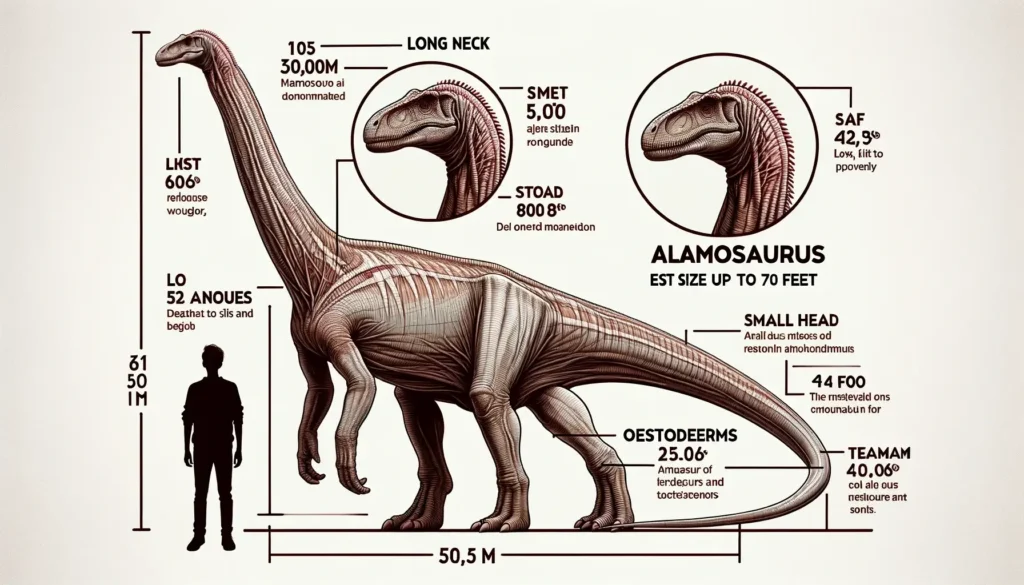
Interesting Facts
- Alamosaurus is related to some of the most famous dinosaurs, such as Diplodocus and Brontosaurus, which belong to the same group of sauropods called diplodocoids.
- Alamosaurus lived in a diverse and rich ecosystem that included other sauropods, such as Parasaurolophus and Kritosaurus, as well as theropods, such as Tyrannosaurus and Troodon.
- Alamosaurus is one of the few sauropods that have osteoderms, which are bony plates or spikes embedded in the skin. Osteoderms are more common in other groups of dinosaurs, such as stegosaurs and ankylosaurs.
- Alamosaurus may have lived up to 100 years old, based on the growth rings in its bones.
Related Dinosaurs
- Saltasaurus: A close relative of Alamosaurus that also had osteoderms and a hump or a sail on its back, but was much smaller and lived in South America.
- Argentinosaurus: A distant cousin of Alamosaurus that was one of the largest dinosaurs ever, with an estimated length of 35 meters (115 feet) and weight of 73 metric tons (80 short tons).
- Brachiosaurus: A primitive sauropod that had a long neck and a short tail, and was one of the tallest dinosaurs, reaching up to 13 meters (43 feet) at the shoulder.

